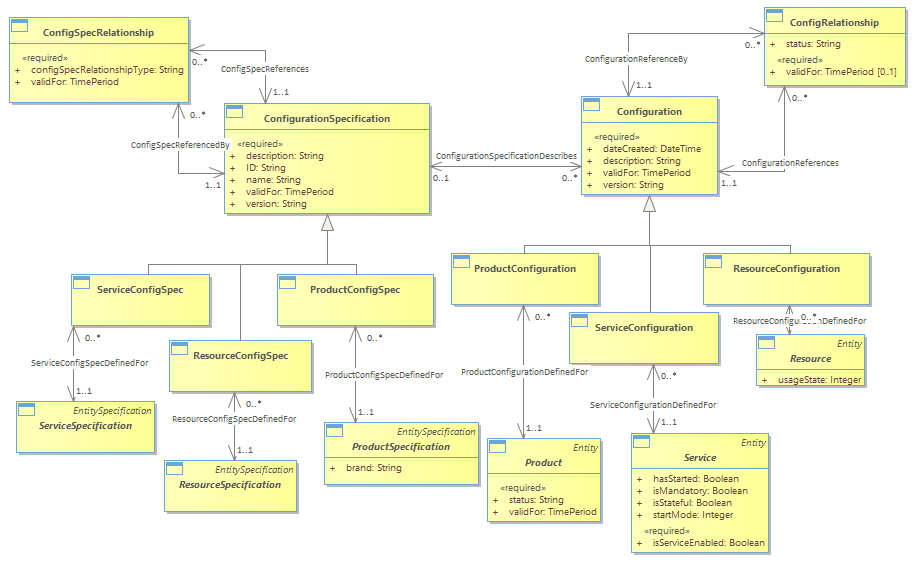
Figure CP.01 - Configuration Spec and Configuration (copy from Common) : Class diagram
| Created: | 3/28/2022 3:51:09 PM |
| Modified: | 5/16/2022 3:00:25 PM |
 Project: Project: |
|
 Advanced: Advanced: |
A Configuration (also referred to as a Profile) defines how a Resource, Service, or Product operates or functions. A Configuration may contain one or more parts (which is realized by using the Atomic/Composite pattern, but it is represented as a single entity - ConfigurationRelationship), and each part may contain zero or more fields. Each field may have attributes that are statically or dynamically defined. Some of these fields have fixed values, while others provide values from which a choice or choices can be made (e.g., using the EntitySpec/Entity and/or CharacteristicSpec/CharacteristicValue patterns).<br/>Starting from the right-side of the figure:<br/> • The Resource, Service and Product classes are as defined in the SID model. <br/> • The associated configuration objects are used to define additional properties (attributes) of the associated entity. For example, consider an Equipment instance (a Resource). The intrinsic properties of the Equipment instance (perhaps but not necessarily common to all Equipment instances) are defined in the Resource itself. Additional properties (which may not be common to all Equipment instances) are provided in one or one Resource Configuration instances. <br/> • It is possible to relate one instance of Configuration to several others via the ConfigRelationship. This is useful when configuring complex (aggregate) entities. For example, to configure a circuit pack, one may also need to configure the various ports supported by the circuit pack and in turn, the connection termination points supported by the ports. <br/>On the left-side of the figure, there are various Configuration Specifications that correspond to the various Configuration classes on the right-side of the figure. This is the typical EntitySpecification/Entity pattern already present in the SID model but now applied to a particular kind of Entity, i.e., a Configuration. The EntitySpecification represents the definition of an entity. The idea is that the various ResourceConfigSpec instances are reusable across many instances of Resource.<br/><i>Refer to Common Domain guide book section Configuration and Profile ABE for more details</i><br/>